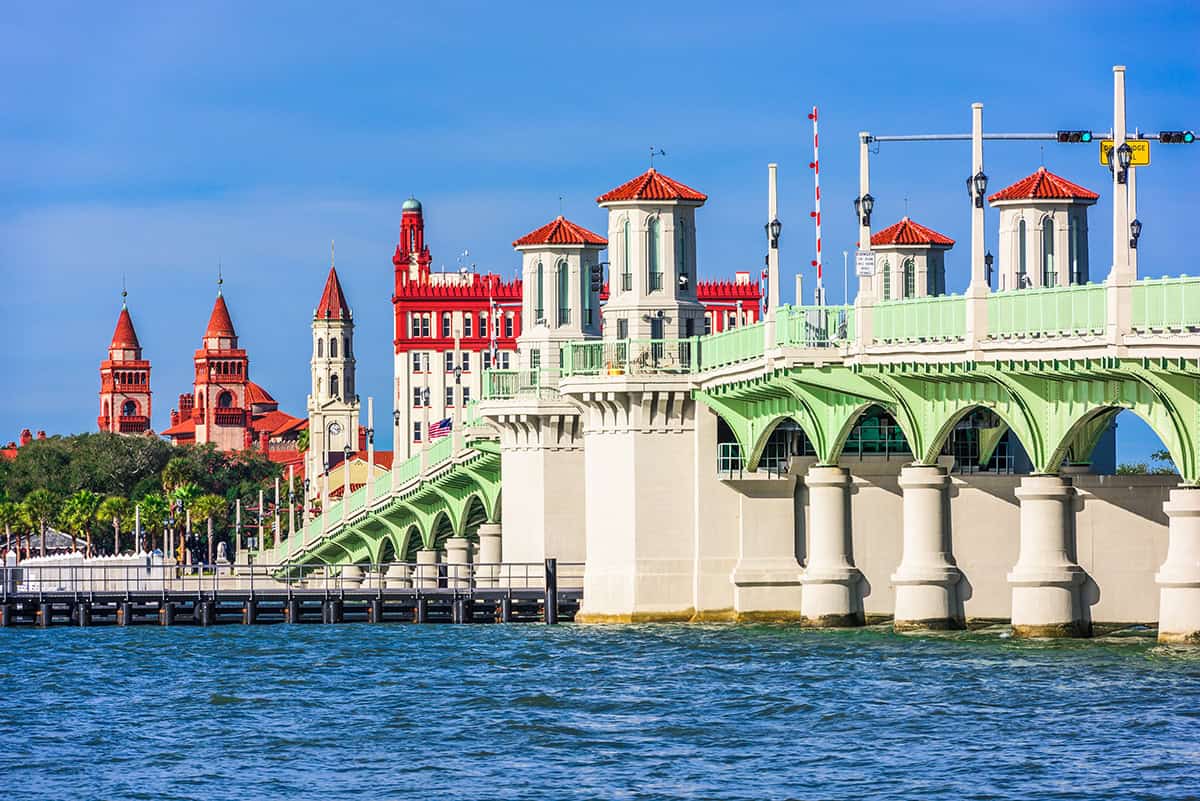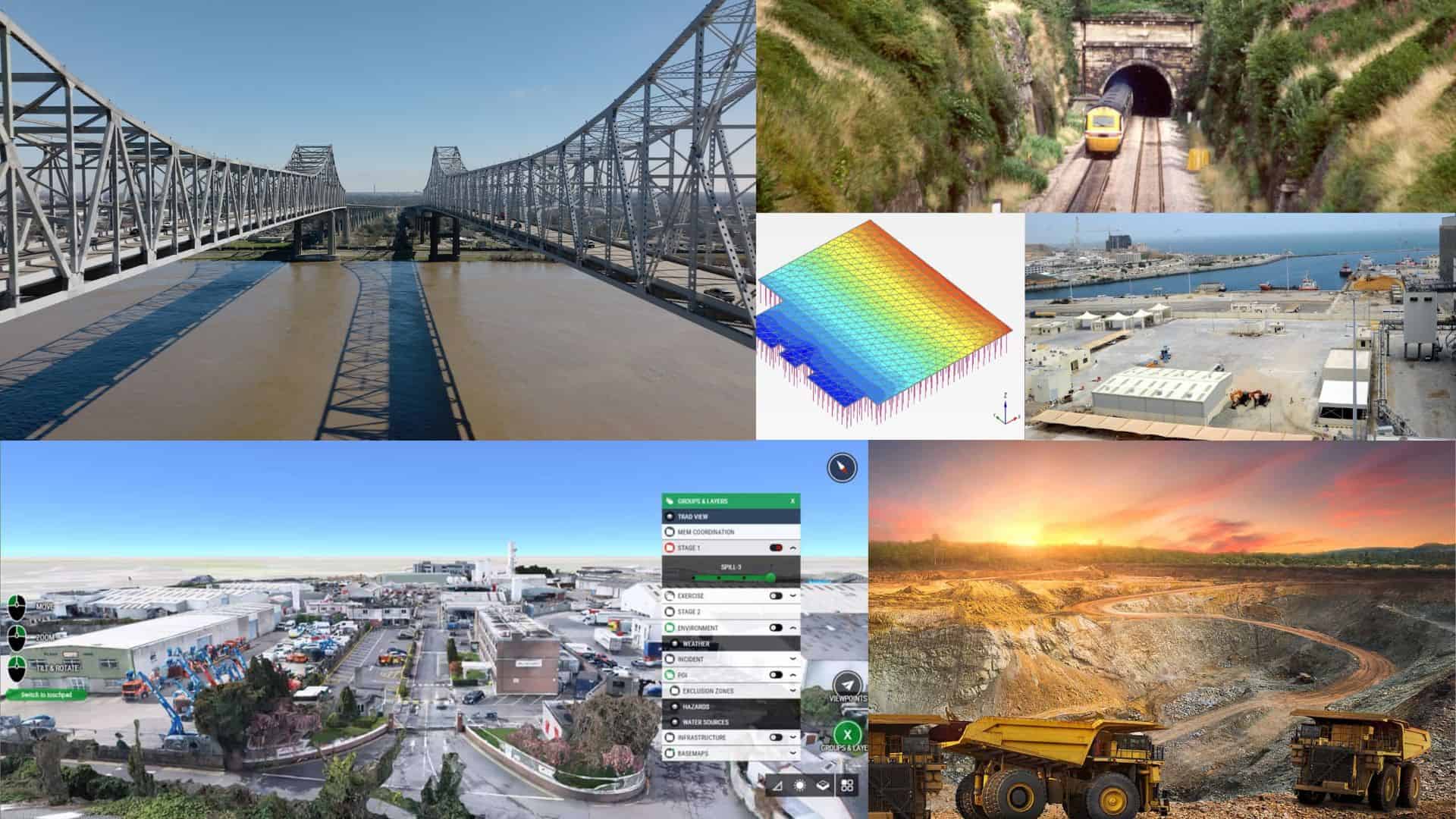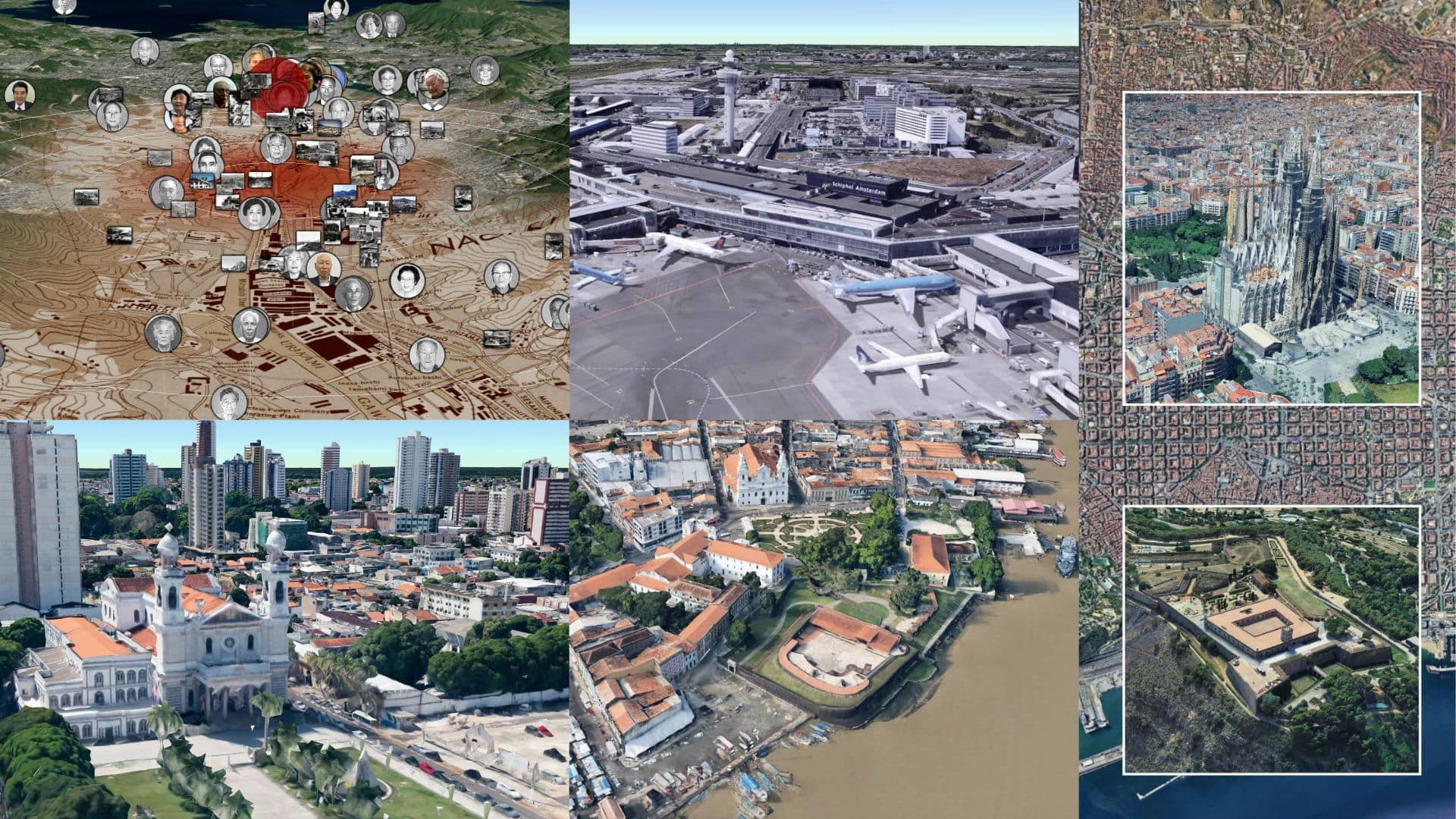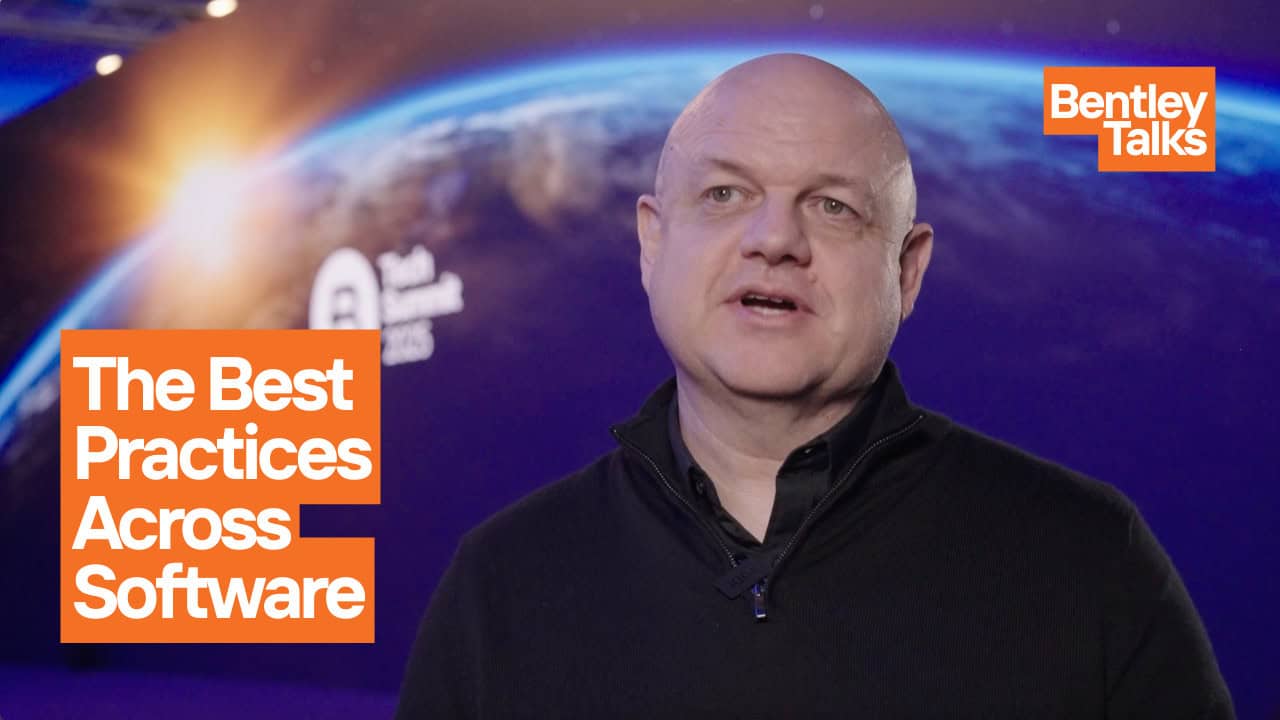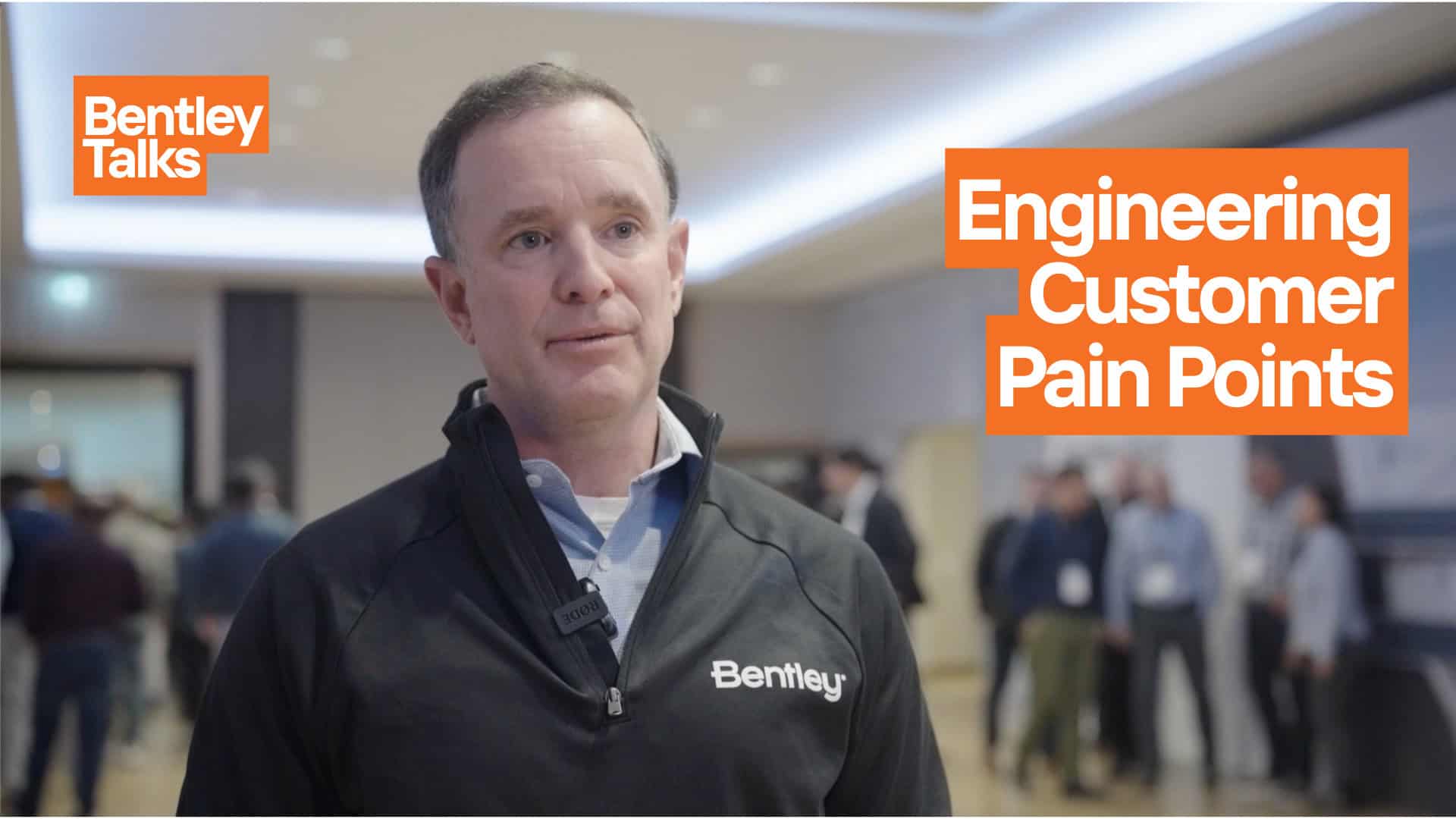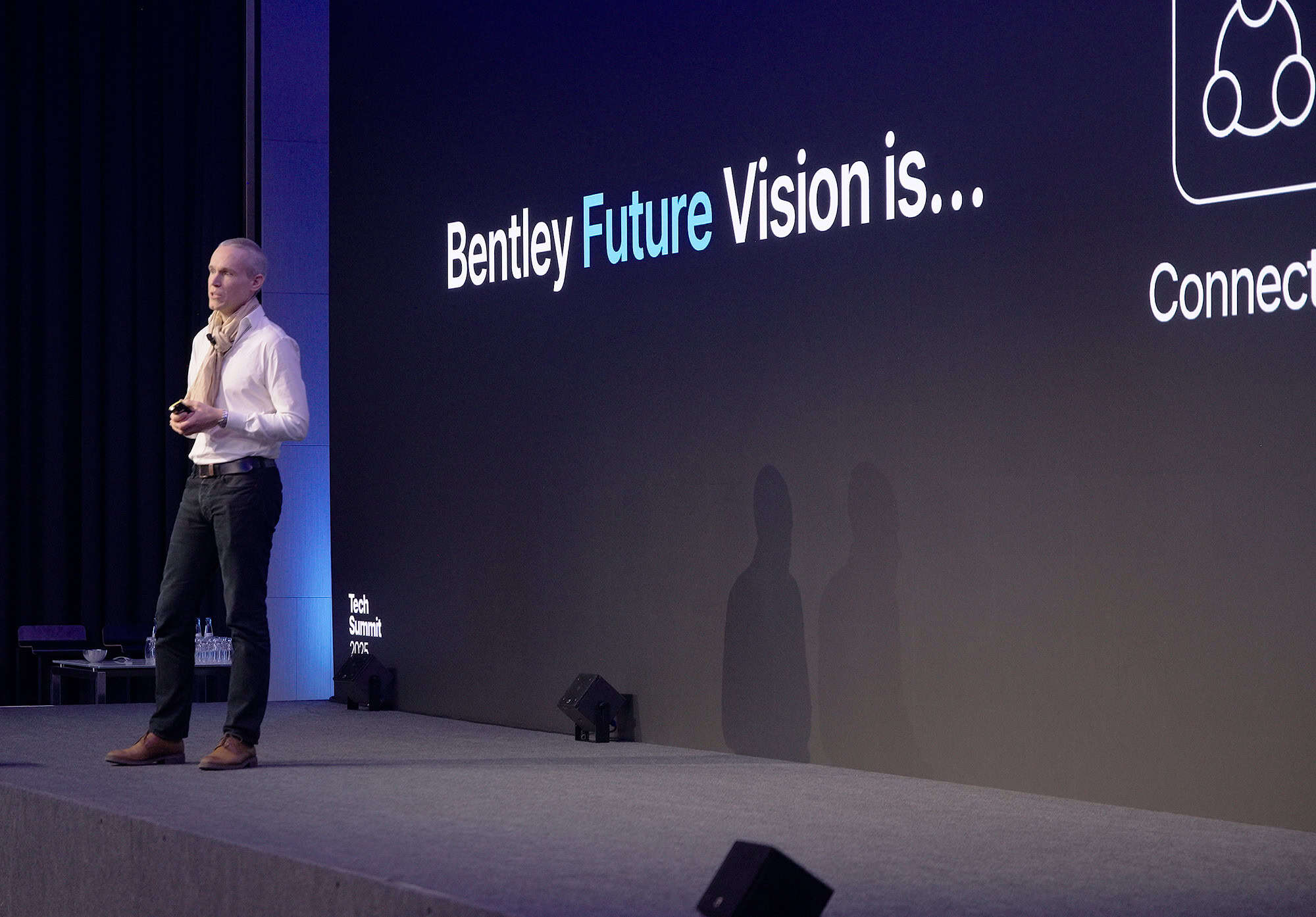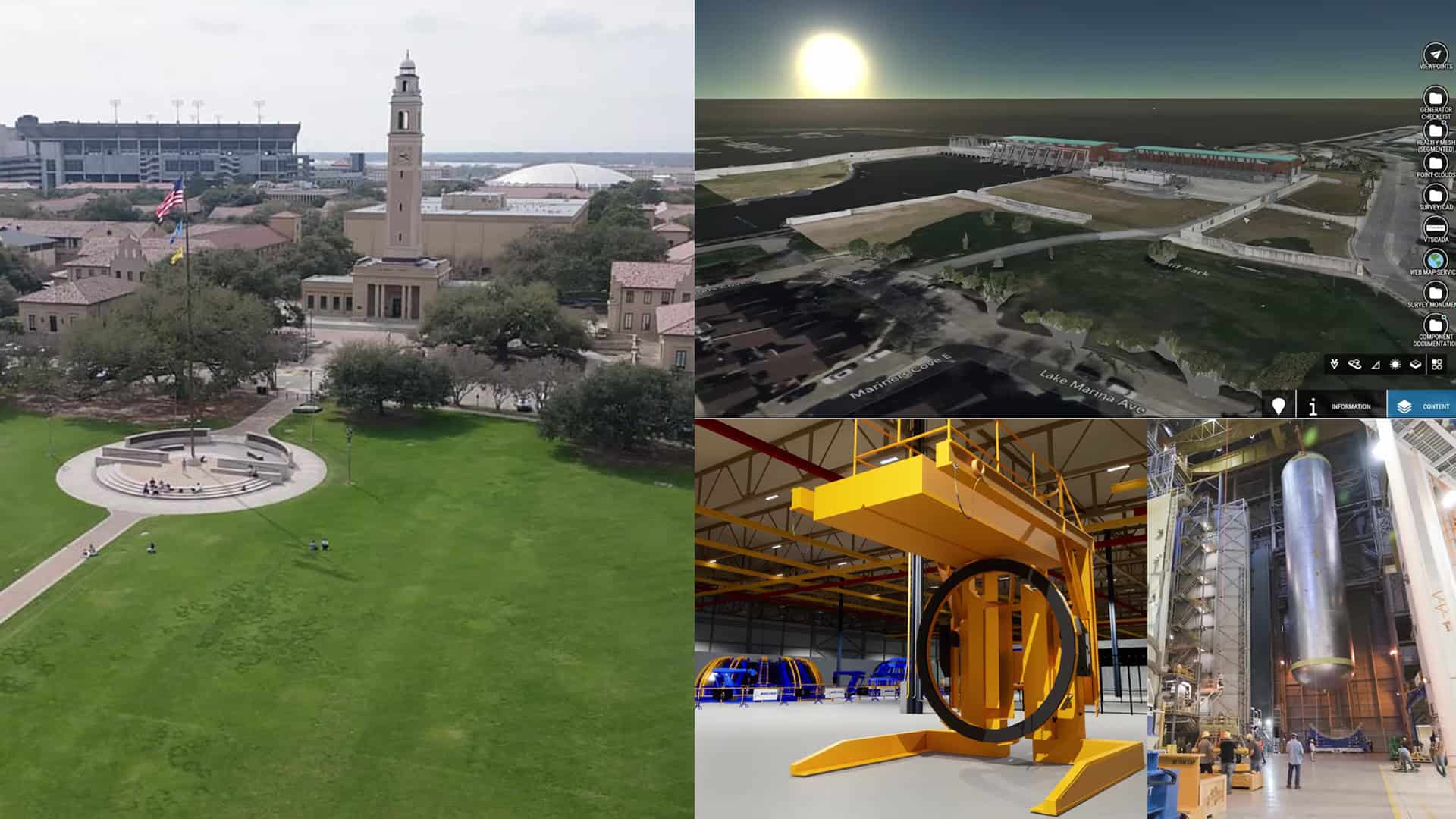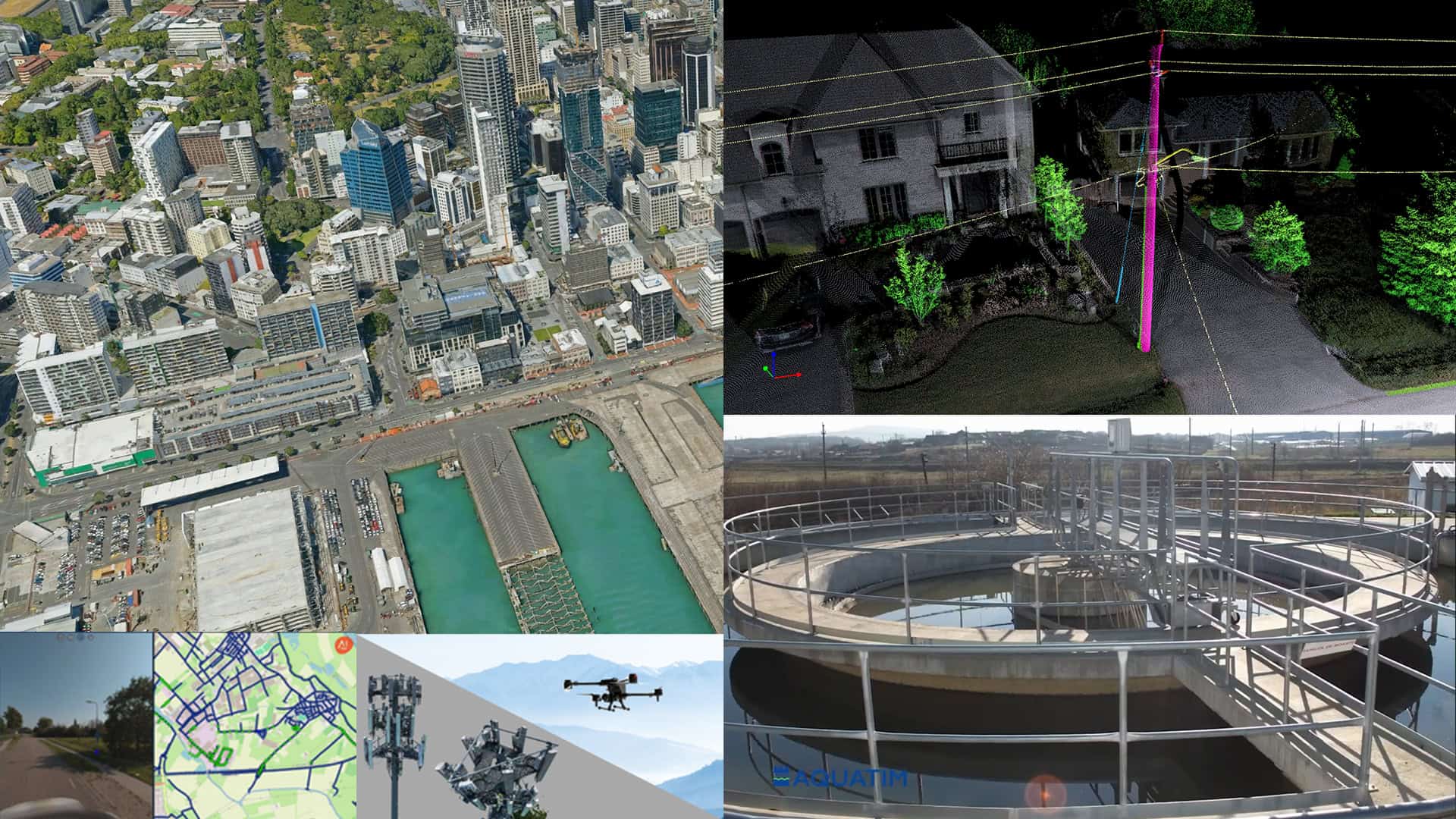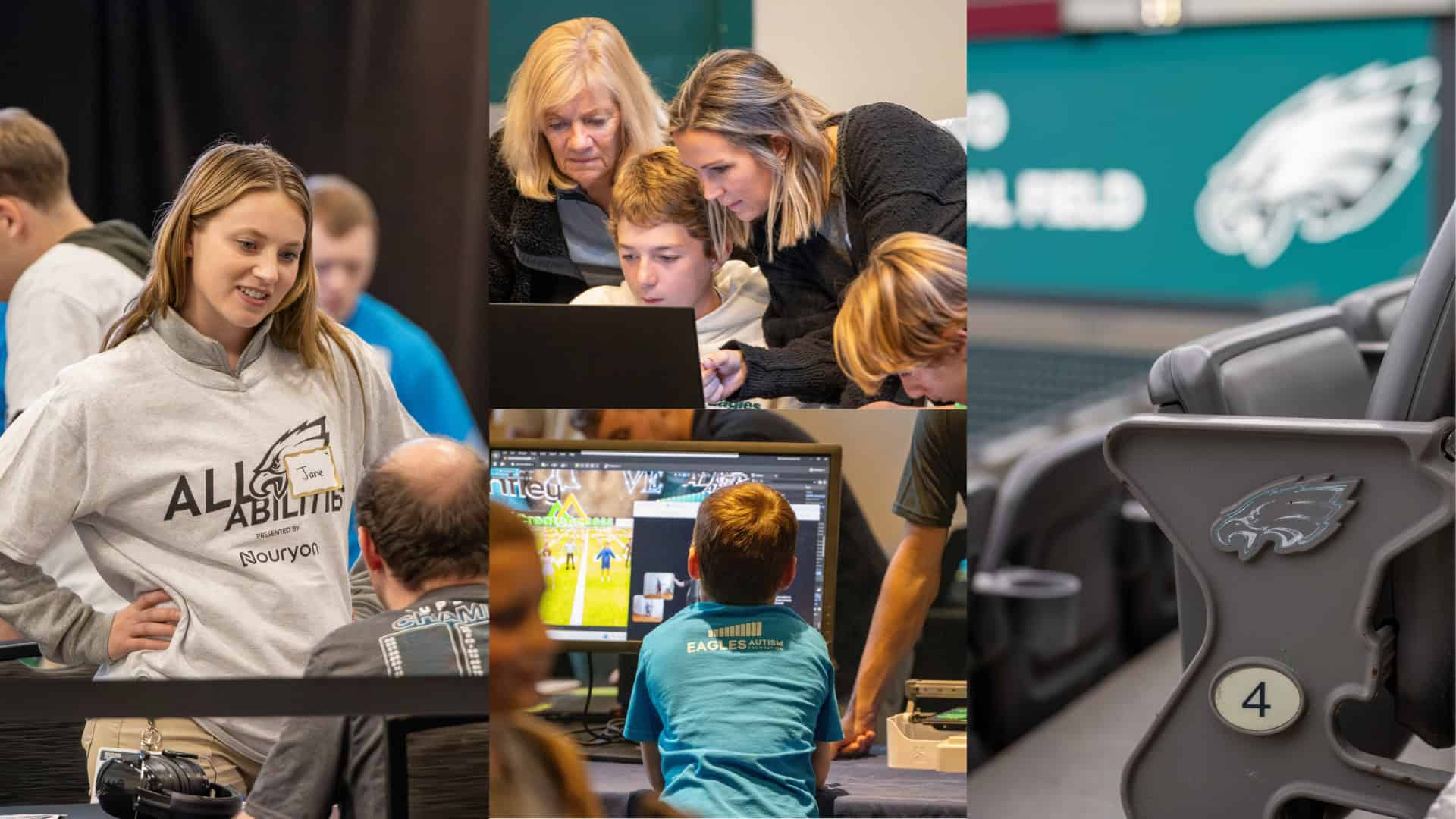There’s a discreet charm to drawbridges, and Florida is the perfect place to experience it. The state boasts 50 drawbridges along the Intracoastal Waterway alone, including the picturesque Bridge of Lions in St. Augustine, which has served locals and visitors for nearly a century. These engineering marvels periodically transform the landscape, lifting their roadways to the sky and letting boats quietly slip through. Keeping them in good shape is crucial, though aging drawbridges can quickly turn from a charming sight into a bottleneck.
“Any of y’all have bridges where you’re from, well, I sure hope yours are flat,” said Eileen Higgins, Miami-Dade County commissioner, whose district includes parts of Miami and Miami Beach. “You are living the dream. Ours are all drawbridges and there’s a lot of moving parts […] When they break, they got to stay up, which causes a traffic nightmare because boats can only go on water, and cars can usually go other ways.”
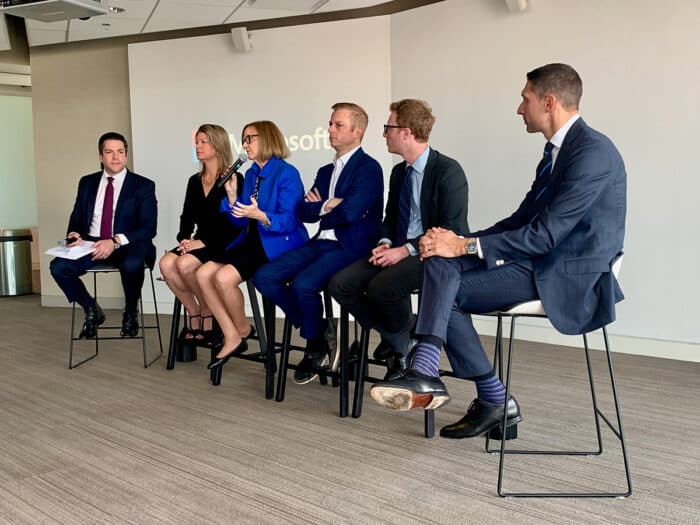 During the Navigating the Future of AI and Transportation event hosted by Microsoft. Transportation and policy experts explored how AI and other digital technologies can support and drive more efficient transportation infrastructure.
During the Navigating the Future of AI and Transportation event hosted by Microsoft. Transportation and policy experts explored how AI and other digital technologies can support and drive more efficient transportation infrastructure.Navigating the future
Higgins was speaking at Navigating the Future of AI and Transportation, a gathering of policy and industry experts hosted by Microsoft in Washington, D.C. last week. Speakers at the event included Senator Maria Cantwell, who talked about AI’s potential to revolutionize the transportation industry.
Higgins spoke on a panel that addressed AI, innovation, road safety, skills and training, and other topics. The panel included elected officials, a senior member of the U.S. Department of Transportation (DOT), labor representatives, and technology executives from Microsoft and Bentley Systems, the infrastructure engineering software company. “We believe AI is the defining technology of our time, and it’s fundamental to figure out how best to harness the power of AI and work with government and stakeholders to figure out the right governance regime for AI,” said Gerry Petrella, general manager for U.S. public policy at Microsoft, who opened the event.
Higgins used drawbridges as an example of where her county can use the latest AI technology to help monitor some of its infrastructure. An AI system, for example, could use information from sensors, drones, cameras, and other sources to predict the right time to schedule bridge maintenance. “I’m excited to see how AI harnesses all this data in terms of information that can improve and transform the transportation sector,” she said.
Sen. Cantwell, who represents the state of Washington, said that AI can help optimize existing infrastructure, advance the design of new infrastructure, improve maintenance, ensure safety, and reduce the amount of time wasted driving. She said that Seattle drivers spend 40% more time in traffic than the national average, and that the city has the 27th worst traffic globally. “We see these issues with bridges or capacity, but getting a real understanding of that demand based on real data and information would be so helpful,” Sen. Cantwell said. For example, the state of Washington has an $11 billion road and bridge maintenance backlog. For comparison, the state’s 2023-25 DOT budget is $14.6 billion. “Preventive maintenance can save states up to 25% in long-term maintenance costs, and AI can help states identify when and where to spend those limited maintenance dollars,” she said.
SMART about safety
Ben Levine, deputy assistant secretary for research and technology at the U.S. DOT, spoke about AI and road safety. He highlighted the Intersection Safety Challenge, which seeks to transform intersection safety “through the innovative application of emerging technologies.” Levine said that a quarter of all roadway fatalities occur near or at the intersection and that the challenge was “essentially a competition to develop the best algorithm to predict what’s going to happen at the intersection” and improve road design.
Levine said the challenge was also an opportunity to better understand the physical world by creating its digital representation. It can help drive industry growth and academic research and, in turn, support the DOT’s safety mission “and our goals around economic mobility and equity and climate and all the important things that transportation intersects with,” Levine said.
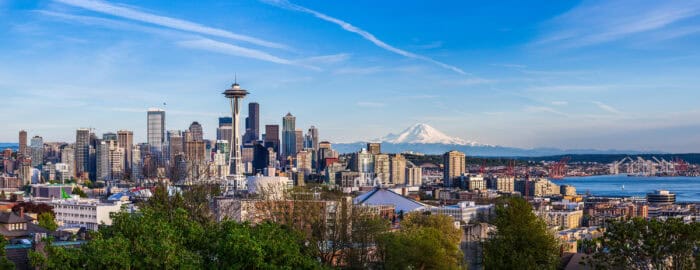 Downtown Seattle skyline and Mt. Rainier in the background.
Downtown Seattle skyline and Mt. Rainier in the background.Levine and others spoke about projects funded by the Strengthening Mobility and Revolutionizing Transportation (SMART) grants program. The program was established by the Infrastructure Investment and Jobs Act (IIJA), also known as the Bipartisan Infrastructure Law (BIL). For example, one project that Levine mentioned seeks to improve the safety of a pedestrian light rail crossing south of Seattle, “and how AI at the intersection can better understand the path planning of both the pedestrians and do better signalization,” he said.
Redmond, Washington, is one place using SMART grants. Angela Birney, Redmond’s mayor, said that her city has been integrating AI into city management to address pressures caused by urban expansion. “Every city deals with some of the same transportation challenges,” Birney said. “Road safety is a major national and local concern, and Redmond has piloted the use of AI video analytics at several of our intersections to track road user interactions, which reduces crash risks.” She added that “AI is really important to all of our jurisdictions,” and that they are using it “as a tool to reduce the incidence of fatal crashes and even other accidents in the area.”
Twin peeks
David Lieberman, senior director for U.S. government relations at Bentley, addressed the digital twin concept that Levine mentioned. A digital twin is a digital representation of a real-world asset. Bentley makes software that allows users to build digital twins as large as an entire city. “Imagine a world in which you can predict when and how your transit and rail line is going to break down,” Lieberman said. “You don’t have to imagine it guys, guess what—it’s here today. All this stuff is really exciting.”
The speakers also sounded an alarm about the need for AI training. “Every day, we’re losing time,” said Matthew Colvin, chief of staff at the Transportation Trades Department (TTD), America’s largest transportation labor federation. He pointed to research the Bureau of Labor published a few years ago showing that the U.S. workforce was “not equipped to evaluate the demands and challenges that are going to come from significant technological change.” TTD has partnered with Microsoft, Carnegie Mellon University, and other organizations “to show folks that we want to be active participants this conversation,” Colvin said.
He said that in the transportation sector, union workers have overseen significant technological change over the last century. “For a lot of folks, there’s sort of a perception that labor is anti-tech, and we’re saying no to everything that comes along. And I don’t think that could be further from the truth.
“Nobody knows their industries better than the people who build, operate, design our transportation network. And no one will better understand how to build the AI tools that can benefit that work.”

